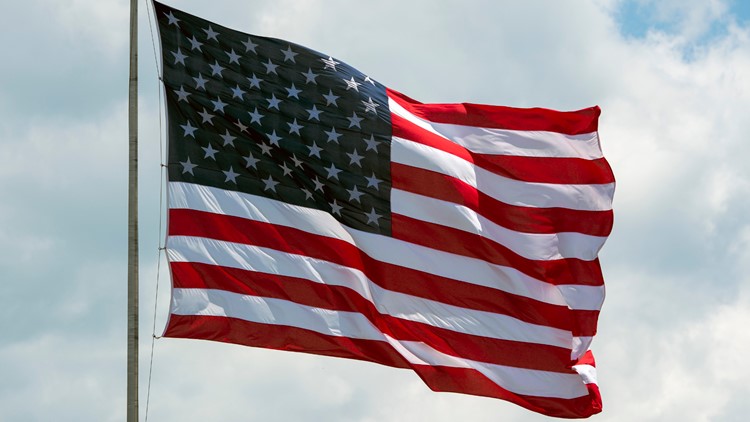The Fourth of July is approaching, and the weekend will be filled with red, white and blue. But are your patriotic decorations violating the U.S flag code? Here are a few reminders of how the American flag should properly be displayed as well as the history behind the rules.
- The flag should always be illuminated by either the sun or by a light at night.
- The flag should always be displayed with the union facing up, except during times of distress and danger.
- No other flag should be placed above or to the right of the American flag when at the same level.
- The flag should never touch anything beneath it, including the ground, floor, water or merchandise.
- The flag should never be worn as apparel, bedding or drapery. American flag patches are allowed for the uniforms of military personnel, firemen, policemen and members of patriotic organizations.
- Since the flag is viewed as a living thing, all lapel flag pins should be worn on the left lapel near the heart.
- The flag should not be used for advertising or temporary purposes. This includes cushions, paper napkins and boxes.
The full U.S. flag code can be read here.
Relative to our countries' history, the flag code is fairly new. The National Flag Code was enacted on Flag Day in 1923. Before then, there were no federal or state regulations on how to display the American flag. However, it wasn't until 1942 when Congress would pass a joint resolution to make the flag code public law.
Although the flag code is still federal law today, if you've been to a cook out with American flag napkins or ever worn an American flag print shirt for Independence Day, you've probably realized that the law is not often enforced. In fact, the Supreme
One of the flag code statutes contained criminal penalties for certain acts of desecration of the flag. However, in 1989, the Supreme Court ruled the statute unconstitutional in Texas v. Johnson. Flag burning was ruled as a form of "symbolic speech" protected under the First Amendment.
Later in October of 1989, Congress passed the Flag Protection Act trying to impose fines and prison time for those who intentionally destroyed the flag. Again, the act was found to violate freedom of expression in the Supreme Court case United States vs. Eichman.



